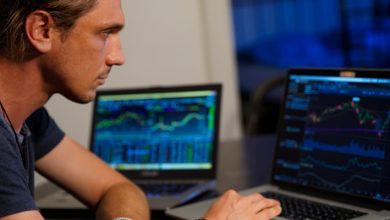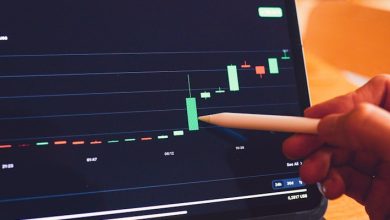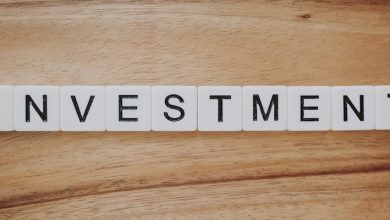How to Use Moving Averages in Crypto Trading

- Understanding Moving Averages in Crypto Trading
- Types of Moving Averages Used in Crypto Trading
- Setting Up Moving Averages on Trading Platforms
- Using Moving Averages to Identify Trends in Crypto Markets
- Incorporating Moving Averages into Your Trading Strategy
- Common Mistakes to Avoid When Using Moving Averages in Crypto Trading
Understanding Moving Averages in Crypto Trading
When it comes to crypto trading, understanding moving averages is essential for making informed decisions. Moving averages are a technical analysis tool used to smooth out price data by creating a constantly updated average price. They help traders identify trends and potential entry and exit points for their trades.
There are two main types of moving averages: the simple moving average (SMA) and the exponential moving average (EMA). The SMA gives equal weight to all data points, while the EMA gives more weight to recent data. Traders often use a combination of these two moving averages to get a clearer picture of the market.
One common strategy is to look for crossovers between short-term and long-term moving averages. When the short-term moving average crosses above the long-term moving average, it is seen as a bullish signal. Conversely, when the short-term moving average crosses below the long-term moving average, it is considered bearish.
It is important to remember that moving averages are lagging indicators, meaning they are based on past prices. They can help confirm trends but may not always accurately predict future price movements. Traders should use moving averages in conjunction with other technical analysis tools to make well-informed trading decisions.
Types of Moving Averages Used in Crypto Trading
Moving averages are a key technical indicator used by traders in the cryptocurrency market to analyze price trends and make informed trading decisions. There are several types of moving averages that traders commonly use when trading crypto:
- Simple Moving Average (SMA): The SMA is calculated by adding up the closing prices of a specific number of periods and then dividing by that number. This moving average gives equal weight to each data point in the calculation.
- Exponential Moving Average (EMA): The EMA is a weighted moving average that gives more weight to recent price data points. This makes the EMA more responsive to current price movements compared to the SMA.
- Smoothed Moving Average (SMMA): The SMMA is a type of moving average that is calculated by taking the average of a specific number of periods, but it also takes into account previous SMMA values. This helps to reduce the impact of sudden price fluctuations.
- Weighted Moving Average (WMA): The WMA is a moving average that assigns a higher weight to the most recent data points, making it more responsive to price changes. This can help traders identify trends more quickly.
Each type of moving average has its own strengths and weaknesses, and traders may choose to use one or a combination of several moving averages depending on their trading strategy and risk tolerance. By understanding how each moving average is calculated and how it can be used to analyze price trends, traders can make more informed decisions when trading cryptocurrencies.
Setting Up Moving Averages on Trading Platforms
To set up moving averages on trading platforms, you first need to log into your account and navigate to the charting section. Look for the indicators tab or menu option, where you can find a list of available technical analysis tools. Locate the moving averages indicator from the list and select it to add it to your chart.
Once you have added the moving averages indicator to your chart, you can customize its settings based on your trading strategy. You can adjust the time period for the moving averages, as well as the type of moving average (such as simple, exponential, or weighted). Additionally, you can choose the color and line style for each moving average line to make them easier to distinguish.
After customizing the settings to your liking, you can apply the moving averages to your chart. The moving average lines will then be displayed on the price chart, showing the average price of the asset over a specified period of time. You can use these moving averages to identify trends, support and resistance levels, and potential entry and exit points for your trades.
Using Moving Averages to Identify Trends in Crypto Markets
When it comes to analyzing trends in crypto markets, one useful tool that traders often turn to is moving averages. Moving averages help smooth out price data to identify the direction of a trend over a specific period of time. By plotting moving averages on a price chart, traders can get a clearer picture of whether an asset is trending up, down, or trading sideways.
There are different types of moving averages that traders can use, such as simple moving averages (SMA) and exponential moving averages (EMA). SMAs give equal weight to each data point over the specified period, while EMAs give more weight to recent data points. Traders can choose the type of moving average that best suits their trading strategy.
One common strategy for using moving averages to identify trends is to look for crossovers. A crossover occurs when a shorter-term moving average crosses above or below a longer-term moving average. For example, if the 50-day SMA crosses above the 200-day SMA, it could signal a bullish trend, while a cross below could indicate a bearish trend.
It’s important for traders to remember that moving averages are lagging indicators, meaning they are based on past price data. While they can help identify trends, they are not foolproof and should be used in conjunction with other technical analysis tools. Additionally, it’s important to consider the time frame being used for the moving averages, as different time frames can yield different results.
Incorporating Moving Averages into Your Trading Strategy
Moving averages are a valuable tool in crypto trading that can help traders make informed decisions about when to buy or sell assets. By incorporating moving averages into your trading strategy, you can gain valuable insights into market trends and potential price movements.
One way to use moving averages in your trading strategy is to look for crossovers between short-term and long-term moving averages. When a short-term moving average crosses above a long-term moving average, it can be a signal to buy. Conversely, when a short-term moving average crosses below a long-term moving average, it can be a signal to sell.
Another way to use moving averages is to look for support and resistance levels. When an asset’s price approaches a moving average from below and bounces off of it, the moving average can act as a support level. On the other hand, when an asset’s price approaches a moving average from above and struggles to break through it, the moving average can act as a resistance level.
Overall, incorporating moving averages into your trading strategy can help you identify potential entry and exit points, as well as provide valuable insights into market trends. By using moving averages in conjunction with other technical analysis tools, you can make more informed decisions about your trades and increase your chances of success in the crypto market.
Common Mistakes to Avoid When Using Moving Averages in Crypto Trading
When using moving averages in crypto trading, there are several common mistakes that traders often make. It is important to be aware of these errors in order to maximize the effectiveness of this technical analysis tool.
- One common mistake is using moving averages in isolation without considering other indicators or market conditions. It is essential to use moving averages in conjunction with other tools to confirm signals and avoid false alarms.
- Another mistake is using the wrong time frame for the moving averages. Choosing the correct time frame is crucial as it can greatly impact the signals generated. Short-term moving averages are more sensitive to price fluctuations, while long-term moving averages provide a more general trend overview.
- Over-reliance on moving averages can also be a pitfall. While they are useful for identifying trends, they should not be the sole basis for trading decisions. It is important to consider other factors such as volume, volatility, and support/resistance levels.
- Failure to adjust moving averages according to the market conditions is another mistake to avoid. Markets are constantly changing, and static moving averages may not always be effective. Traders should be flexible and adapt their strategies accordingly.
- Lastly, ignoring the importance of backtesting moving average strategies can lead to poor results. It is crucial to test different parameters and settings to find the most suitable approach for the specific cryptocurrency being traded.
By being aware of these common mistakes and taking steps to avoid them, traders can improve their use of moving averages in crypto trading and make more informed decisions in the volatile cryptocurrency market.



